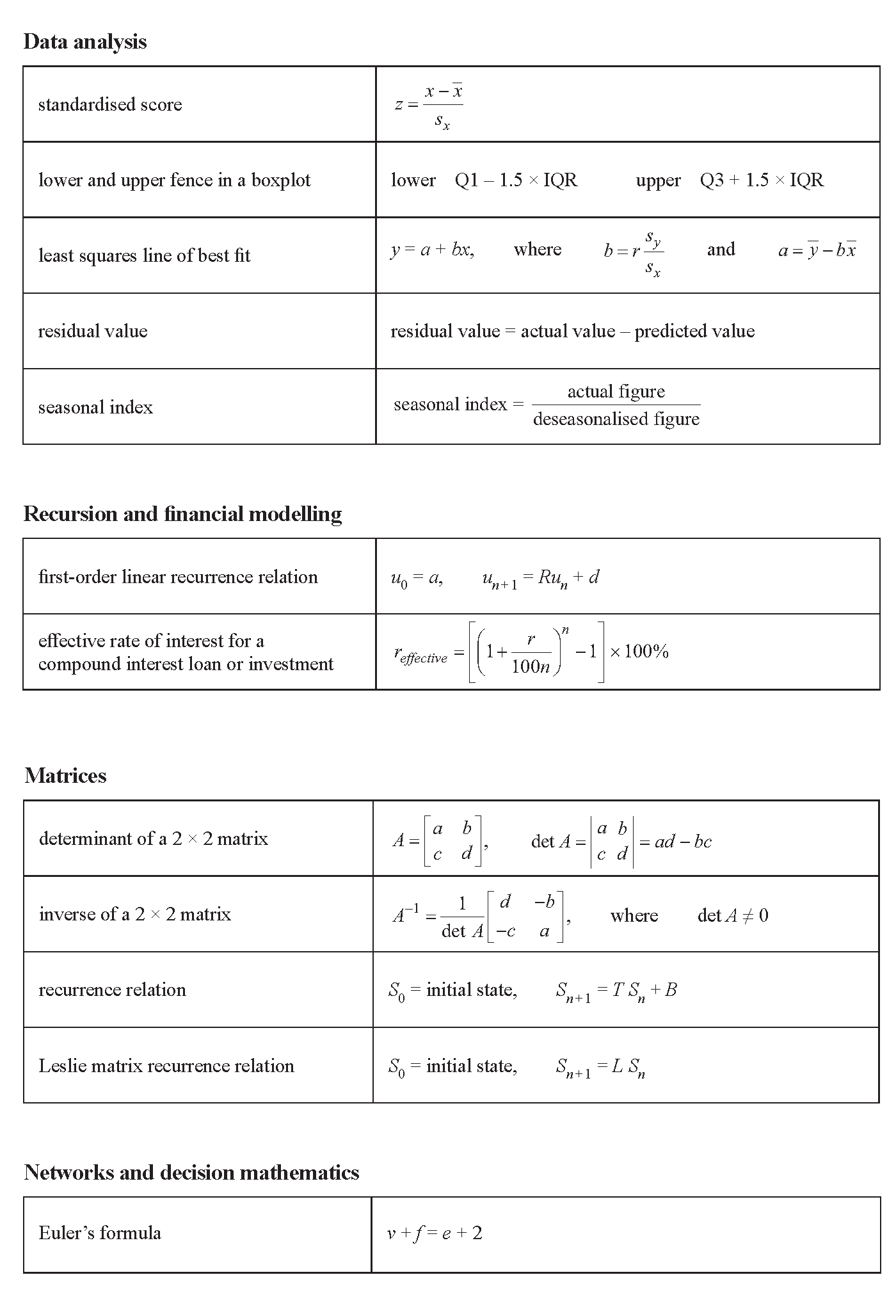VCE General Maths Recursion and Financial Modelling 2018 Exam 2 Mini Test
VCAA General Maths Exam 2
This is the full VCE General Maths Exam with worked solutions. You can also try Mini-Tests, which are official VCAA exams split into short tests you can do anytime.
Number of marks: 12
Reading time: 3 minutes
Writing time: 18 minutes
Instructions
• Answer all questions in the spaces provided.
• Write your responses in English.
• In all questions where a numerical answer is required, you should only round your answer when instructed to do so.
• Unless otherwise indicated, the diagrams in this book are not drawn to scale.
Recursion and financial modelling - 2018 - Exam 2
Julie deposits some money into a savings account that will pay compound interest every month.
The balance of Julie's account, in dollars, after \(n\) months, \(V_n\), can be modelled by the recurrence relation shown below.
\(V_0 = 12000, \quad V_{n+1} = 1.0062 V_n\)
a. How many dollars does Julie initially invest? 1 mark
b. Recursion can be used to calculate the balance of the account after one month.
i. Write down a calculation to show that the balance in the account after one month, \(V_1\), is $12074.40. 1 mark
ii. After how many months will the balance of Julie's account first exceed $12300? 1 mark
c. A rule of the form \(V_n = a \times b^n\) can be used to determine the balance of Julie's account after \(n\) months.
i. Complete this rule for Julie's investment after \(n\) months by writing the appropriate numbers in the boxes provided below. 1 mark
balance = \(\times\) \(^n\)
ii. What would be the value of \(n\) if Julie wanted to determine the value of her investment after three years? 1 mark
After three years, Julie withdraws $14000 from her account to purchase a car for her business.
For tax purposes, she plans to depreciate the value of her car using the reducing balance method.
The value of Julie's car, in dollars, after \(n\) years, \(C_n\), can be modelled by the recurrence relation shown below.
\(C_0 = 14000, \quad C_{n+1} = R \times C_n\)
a. For each of the first three years of reducing balance depreciation, the value of \(R\) is 0.85.
What is the annual rate of depreciation in the value of the car during these three years? 1 mark
b. For the next five years of reducing balance depreciation, the annual rate of depreciation in the value of the car is changed to 8.6%.
What is the value of the car eight years after it was purchased?
Round your answer to the nearest cent. 2 marks
Julie has retired from work and has received a superannuation payment of $492 800.
She has two options for investing her money.
Option 1
Julie could invest the $492 800 in a perpetuity. She would then receive $887.04 each fortnight for the rest of her life.
a. At what annual percentage rate is interest earned by this perpetuity? 1 mark
Option 2
Julie could invest the $492 800 in an annuity, instead of a perpetuity.
The annuity earns interest at the rate of 4.32% per annum, compounding monthly.
The balance of Julie's annuity at the end of the first year of investment would be $480 242.25
b.
i. What monthly payment, in dollars, would Julie receive? 1 mark
ii. How much interest would Julie's annuity earn in the second year of investment?
Round your answer to the nearest cent. 2 marks
End of Question and Answer Book
VCE is a registered trademark of the VCAA. The VCAA does not endorse or make any warranties regarding this study resource. Past VCE exams and related content can be accessed directly at www.vcaa.vic.edu.au
